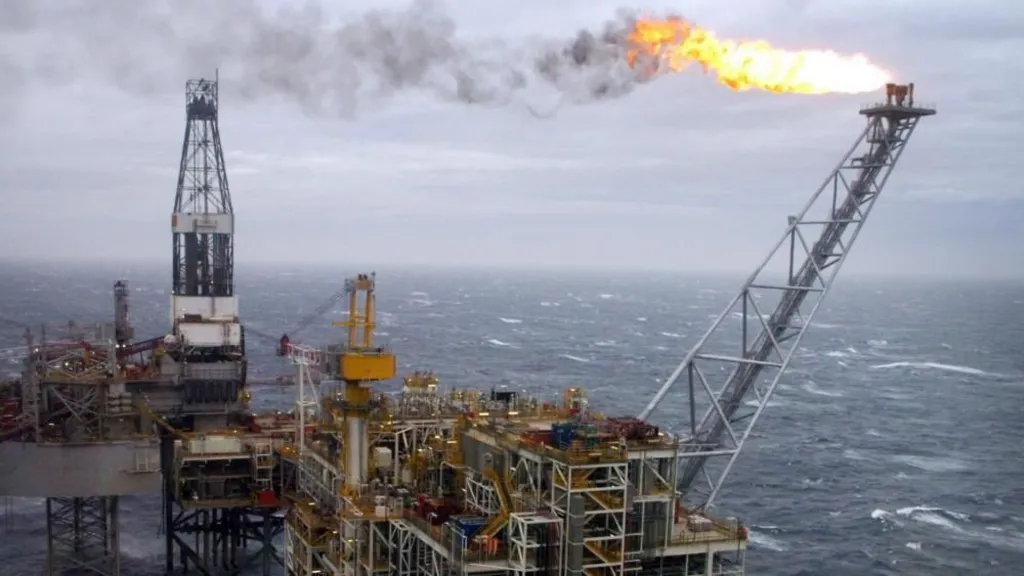There's a pincer movement on offshore energy installations around Scotland's coast – on one side from the rapid development of drones, from the other, their growing use in hostilities.
As Ukrainians know well, the threat comes from the air. But it can also be afloat, with underwater sabotage a major new theatre of low-level warfare.
The threat comes primarily from Russia, according to experts. The Kremlin sees itself as already engaged in a hybrid form of warfare aimed at undermining Nato while avoiding a full-on conflict.
That threat comes also from "non-state actors", capable of using drones to inflict a lot of harm to vital infrastructure – ranging from anti-fossil fuel activists to mercenary proxies of state adversaries.
Cliff Thoburn, head of intelligence of RMI security consultants, says: "We're using drones more and more in the industry. Some employees don't see drones as anything unusual, and adversaries have noticed that, getting drones closer to our platforms for reconnaissance activity.
"There is credible intelligence out there that suggests at a time and a place of their choosing, an adversary – state-based or not – may use drones to mount an attack on our infrastructure."
He talks of drones potentially carrying explosives or nerve agents, suggesting that offshore operators will have to deploy defences to counter drone attacks.
There's a huge amount to target. There are more than 160 platforms visible above the North Sea surface, and far more to be found in the pipelines that link them.
There are thousands of offshore wind turbines in UK waters alone, each linked by cable and linked to substations. Thousands more are planned.
There are high voltage power grid connections crossing the North Sea and along Britain's shores, with yet more planned.
They are in addition to many more telecom cables carrying the data that drives much of the world's economy and transmitting the data that lubricates society, work, public services and leisure, linking across northwest Europe and the Atlantic.
Increasing in scale, increasingly vulnerable and at increasing risk: this much was the sobering assessment of industry experts, security technologists, and academic experts, several of them hinting at experience of the intelligence services, gathered for the first time this week by industry body Offshore Energies UK.
Meeting in Aberdeen's Union Kirk, their task was to compare notes on security and resilience, bringing home global and European lessons to the UK's island and trading vulnerabilities, and to Scotland's energy sector.
They did so as Spain and Portugal recovered from their electricity grids being knocked out – possibly the result of a cyber-attack, and a reminder of how vulnerable societies and economies are if infrastructure is not secure and resilient.
'Distinctive vulnerability'
Closer to home, Marks and Spencer, which trades on being among the most trusted of retail brands, was struggling to contain the effect of a cyber-attack, crippling its ability to deliver to stores and fulfil customers' online orders.
Much of the discussion in Union Kirk was about cyber resilience, where companies and public services have immensely complex and overlapping IT systems, open to their workers and contractors, that face a near-constant onslaught of attacks to probe for weaknesses.
The attackers may be faceless but they are known to those on the front line for their preferred targets, several of them emerging out of the Ukraine war and Russia with names that give them personalities; Kamacite, Electrum, Voltzite.
Some are there for crime, some for the thrill. The conference was told of an IBM estimate that the average crime costs more than £4m, the average ransomware secures nearly £3m (it's declining, as attackers pitch their demands at levels more likely to secure payouts) and the average denial of service attack on a company lasts for 19 days.
But viewing the energy industry from Aberdeen, it's the hardware out at sea that is the distinctive vulnerability. Half a century of installing offshore production infrastructure has paid little attention to fending off attack or sabotage.
During the Cold War, a naval threat could be spotted and seen off. Until recently, only a well-resourced navy could pose a threat under water.
Russia has continued to invest in deep sea submarine capability even while it cut back on other defence spending. And now, subsea drone technology available on the open market is capable of offensive and surveillance activities. It makes sabotage all the more deniable by those who wish Britain's economy ill.
